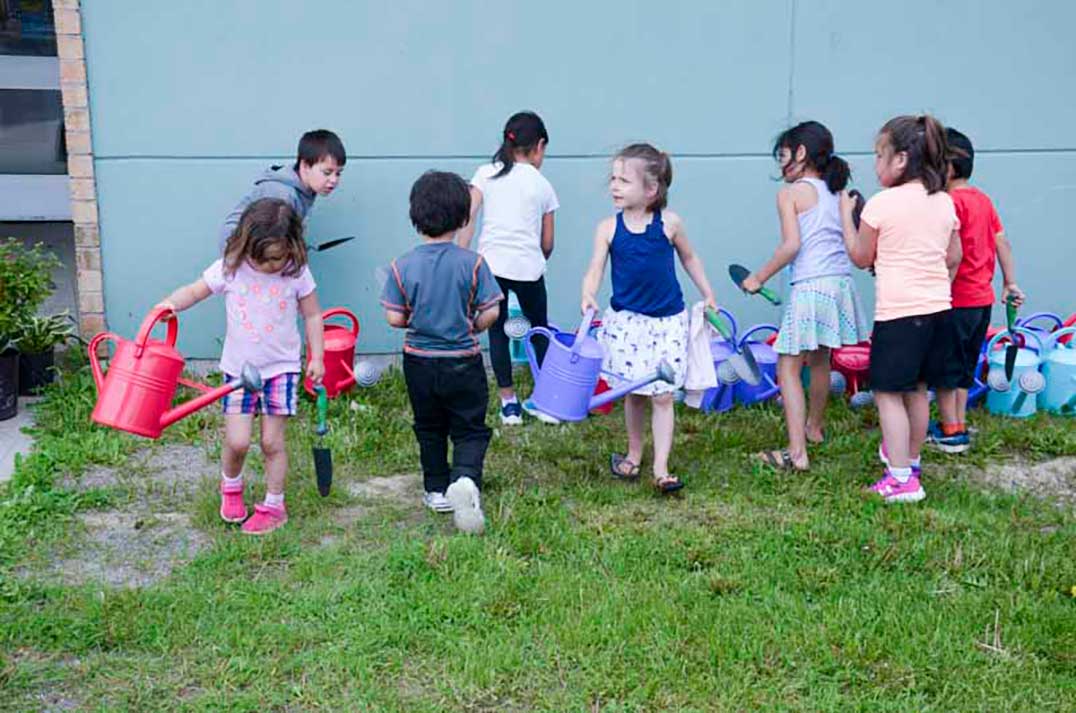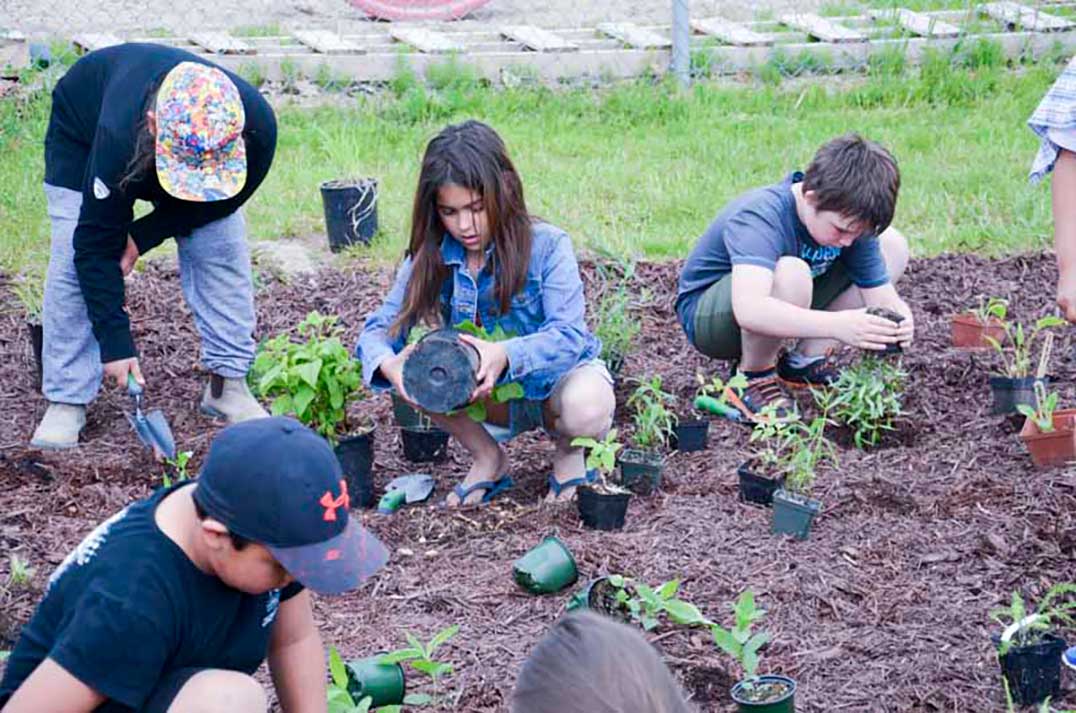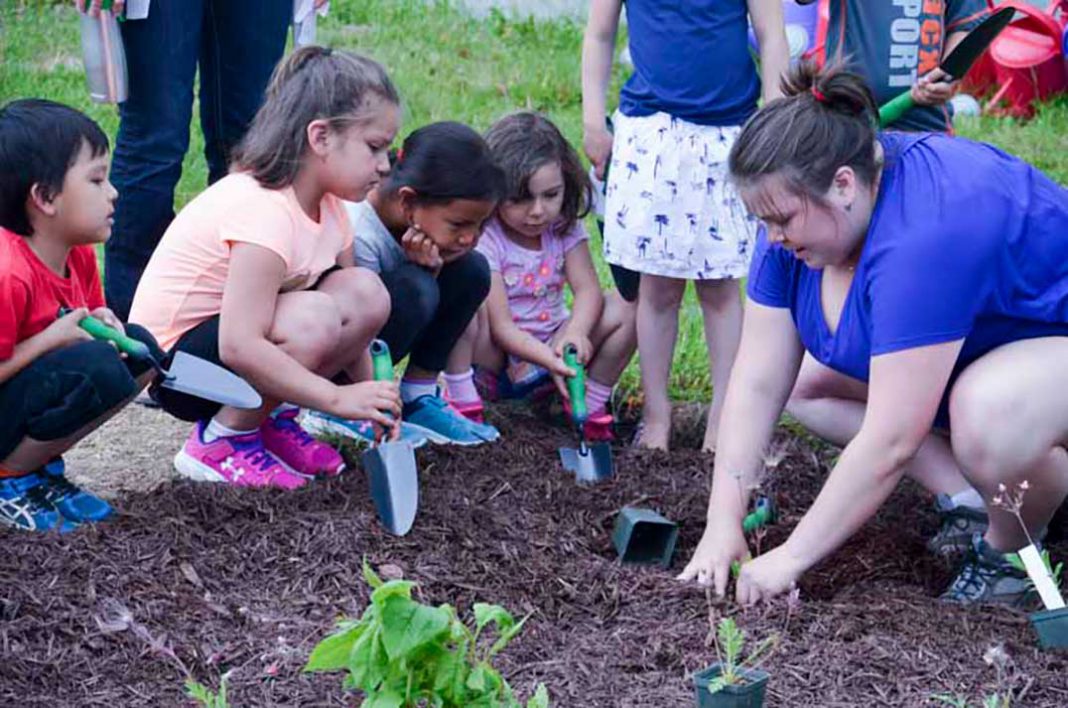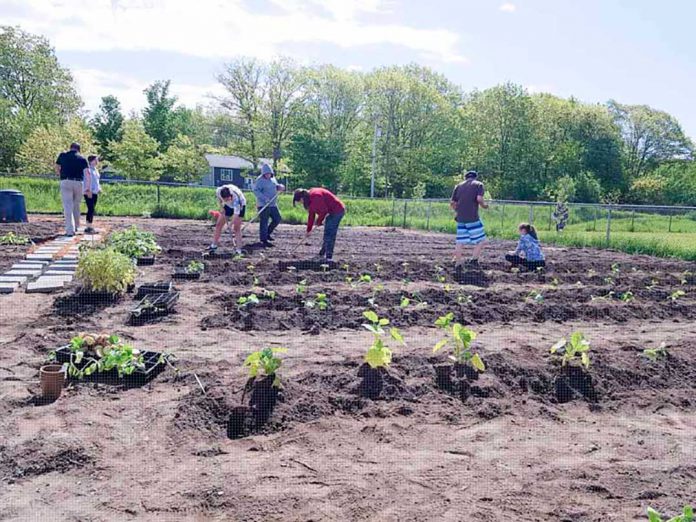BIRCH ISLAND—Ripples continue to emanate from the 2013 Sacred Water Circle, reaching all the way to Manitoulin with the installation of a rain garden at Whitefish River First Nation’s Shawanosowe School.
“The Youth for Water program was a collaboration project between Green Communities Canada and the Sacred Water Circle in Peterborough,” said coordinator Amber Pitawankwat, an intern with the Youth for Water program. Ms. Pitawanakwat is studying at Trent University. “It was recognized that both indigenous and non-indigenous youth saw that something needed to be done about the ongoing water issues that surround many First Nation communities. This program was funded by Ontario Trillium.”
The rain garden project at Shawanosowe is actually funded through RBC Bluewater Project. “The rain garden project was originally developed to be implemented in Peterborough at Trent University,” said Ms. Pitawanakwat. “It was a lengthy process and time was running out to secure funds for the project, so I approached Whitefish River to see if they would be interested in hosting my project.”
Ms. Pitawanakwat explained that rain gardens are shallow bowl-shaped gardens that are intended to capture and filter storm water. “Rain gardens have positive impacts on the environment,” she said. “They are known to remove up to 90 percent of pollutants and can absorb 30 percent more water than a lawn.”

Rain gardens filter out pollutants and help the ground water recharge, reduce water pollution and can even help prevent local flooding, noted Ms. Pitawanakwat. “The flowers in the garden are native wildflowers and the plants here were chosen based on the attraction of pollinators such as butterflies and hummingbirds.”
Ms. Pitawanakwat said that she envisioned the project as “being a useful tool for the community and an educational aid to teach students the importance of protecting and conserving water. Water is the life-blood of Mother Earth and we disrespect it so much. In many places it becomes normalized and can lead to cultural disconnects and health-related issues, which is so sad because water is so powerful.”

As each class came out to the garden, Ms. Pitawanakwat and the teachers gave each a garden trowel and demonstrated how to release the plants from their containers and dig a hole large enough for the plants to safely nestle. The children raced across the soil to select their plants and excitedly began to dig. After they had planted their charges, each student was given a brightly coloured watering can.
“We get to keep them?” exclaimed one Junior Kindergarten student with a wide smile.
“I hope this project will help promote environmental stewardship and teach the students more about the implications of climate change and the impacts it will have on our water sources,” said Ms. Pitawanakwat. “It was an exciting opportunity to get the school involved in.”




